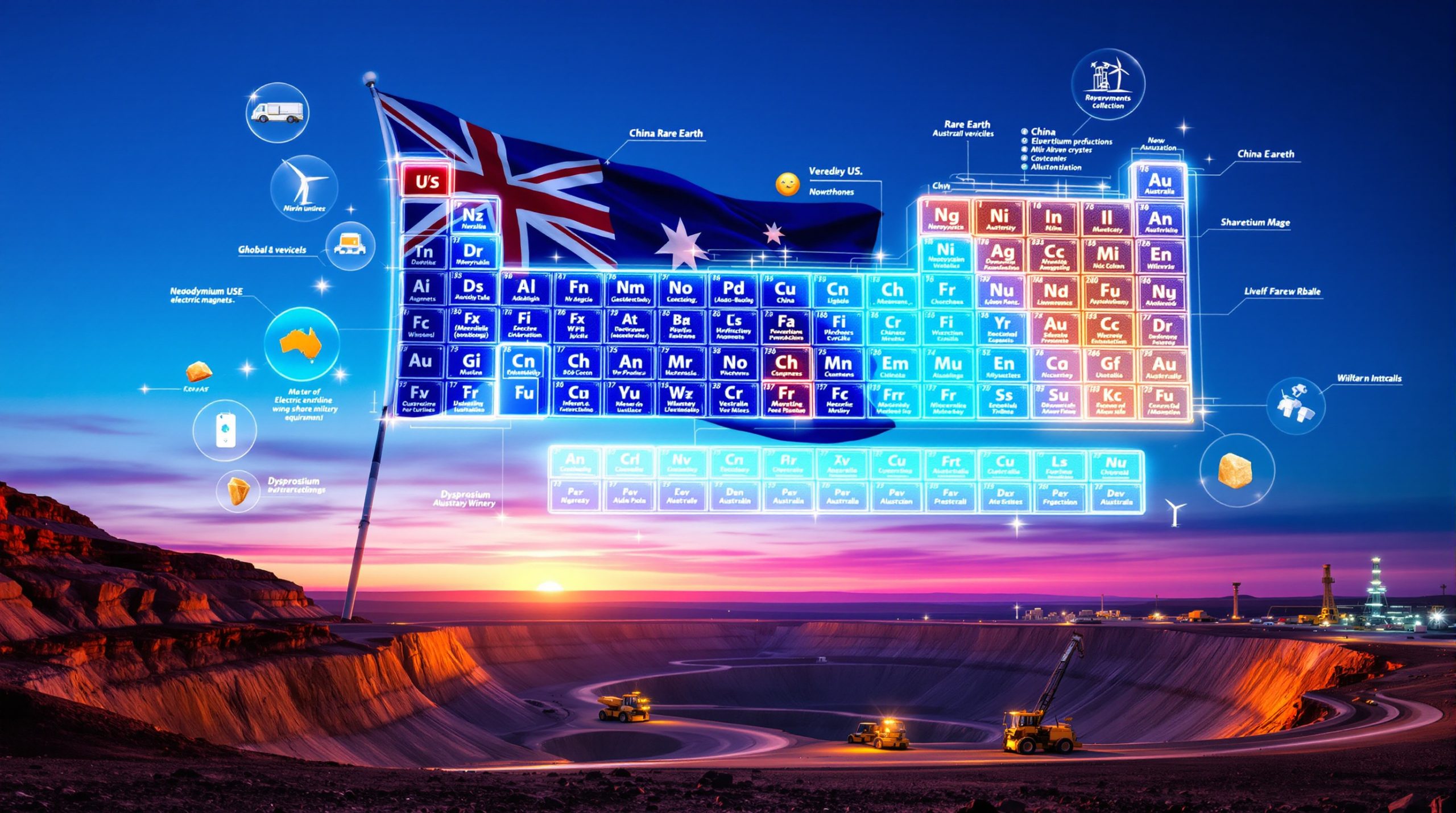The Copper Supply Chain Crisis: Navigating Unprecedented Challenges in a High-Demand Era Why Is Copper Facing a Supply Chain Crisis? The global copper market stands at a critical crossroads in 2025, caught between surging demand and increasingly constrained supply chains. This essential metal—fundamental to electrification, renewable energy, and digital infrastructure—faces a complex web of copper supply chain challenges threatening availability precisely when global requirements are accelerating to historic levels. The current supply chain crisis stems from a convergence of factors: geopolitical tensions restricting trade flows, infrastructure limitations hampering production, and market imbalances creating pricing volatility. This situation is particularly concerning as copper's role in energy transition and technological advancement becomes increasingly central to global economic development. The Growing Supply-Demand Gap Current global copper consumption stands at approximately 28 million tonnes annually, with projections suggesting this could surge beyond 40 million tonnes within a decade. This exponential growth trajectory creates fundamental challenges for supply chains already struggling to maintain equilibrium. The widening gap is driven by: Historically slow mining capacity growth (typically 1-3% annually) Declining ore grades at existing operations Limited investment in new mining projects since 2010 Recycling rates below 20% (compared to 80% for aluminum) Lengthy permitting processes for new mines (up to 30 years in some jurisdictions) How Is Global Copper Production Currently Distributed? The global copper landscape reveals significant geographic concentration, creating inherent vulnerabilities in supply chains. Current production distribution highlights several critical dependencies: Region/Country Share of Global Mined Production Share of Global Refining Capacity China 8% 44% Chile 28% 8% Peru 10% 2% United States 5% 5% DRC 8% <1% Australia 5% 2% Other 36% 39% This concentration creates strategic vulnerabilities, particularly as China dominates refining capacity while controlling a relatively small portion of mining output. This imbalance has led to a situation where Chinese smelters are offering zero or negative treatment charges due to intense competition for copper concentrates—a situation industry experts describe as "unsustainable" for refineries in other regions. What Recent Disruptions Have Impacted Copper Supply? Major Production Setbacks Several significant disruptions have recently impacted global copper availability: The closure of Cobre Panama mine in late 2023 removed 350,000 tonnes of annual supply U.S. copper output declined 11% in 2023 and an additional 3% in 2024 Operational challenges at Codelco (Chile's state-owned producer) have created production uncertainties Power outages in Chile have periodically affected major mining operations The International Copper Study Group's forecast of a modest 289,000-tonne surplus for 2025 could quickly evaporate due to ongoing disruptions Geopolitical and Trade Tensions The copper supply chain faces mounting geopolitical pressures: U.S. tariff policies have created trade war effects on copper affecting copper flows Political instability in major producing regions like Chile, Peru, and the DRC threatens consistent output Western nations face strategic decisions about allowing Chinese dominance in copper refining Approximately 70% of copper producers cite geopolitical tensions as their primary supply chain concern What's Driving the Unprecedented Copper Demand? The AI and Data Center Revolution One of the most significant and underappreciated drivers of copper demand is the explosive growth of artificial intelligence infrastructure: Each megawatt of applied energy in data centers requires approximately 27 tonnes of copper AI server farms under construction in the UAE will consume 5GW of power—equivalent to four million U.S. homes Electricity demand in the U.S. has risen 14.2% year-to-date through August 2025, largely driven by data center expansion Industry projections suggest AI infrastructure spending could reach trillions of dollars by the 2030s The April 2025 Iberian Peninsula blackout demonstrated the grid vulnerabilities created by server farm concentration Battery Energy Storage Systems (BESS) The rapid expansion of energy storage is creating another significant demand driver: BESS market growth has exceeded 50% annually after several years of 100%+ growth Stationary storage systems now represent more than 60% of the electric vehicle market size Grid infrastructure upgrades required for AI data centers will drive millions of tonnes of new copper demand The historical 1% compound annual growth in electricity output across Europe and North America is being dramatically accelerated Traditional Demand Sectors These new demand sources compound traditional copper requirements: Electric vehicles (each requiring 2-4 times more copper than conventional vehicles) Renewable energy infrastructure (wind, solar, and transmission) Conventional construction and infrastructure development Industrial applications and consumer electronics What Are the Critical Bottlenecks in the Copper Supply Chain? Mining Capacity Constraints The foundation of the supply chain faces fundamental limitations: New copper mines typically require 7-10 years from discovery to production (up to 30 years in the U.S.) Capital intensity has increased significantly, with multi-billion dollar investments required for major projects BHP and Rio Tinto's Resolution copper project in Arizona has spent 25 years in permitting without production Environmental regulations and community opposition create additional hurdles for new projects Declining ore grades require processing more material for the same copper output Refining and Processing Limitations The midstream portion of the supply chain presents additional challenges: The U.S. operates only three domestic primary copper smelters despite having 48 million tonnes of identified resources Western nations face strategic decisions about investing in domestic refining capacity to reduce dependency on China Current smelter treatment charges are at unsustainable levels due to competition for concentrates Environmental regulations increase operating costs for processing facilities Logistics and Transportation Issues Moving copper through global supply chains encounters numerous obstacles: Export-import disconnects create inefficiencies (e.g., the U.S. exports raw copper while importing refined copper) Infrastructure limitations in producing regions constrain efficient transportation Shipping costs and availability fluctuate based on global economic conditions Traceability requirements for responsibly sourced materials add complexity How Are Companies and Countries Responding to These Challenges? Strategic Investments in New Production Despite challenges, several notable developments are underway: Gunnison Copper recently activated its Johnson Camp mine in Arizona, targeting 25 million pounds of annual production by 2026 The company is exploring an 8km trend of skarn copper deposits and potential porphyry copper resources Barrick Mining is developing one of the world's largest new copper mines in Pakistan and funding major expansion in Zambia BHP and Rio Tinto continue pursuing the Resolution copper project despite permitting delays Policy and Regulatory Responses Governments are increasingly recognizing copper's strategic importance: The Trump administration aims to drastically reduce mine permitting timelines Western nations are evaluating investments in domestic refining capacity to reduce dependency on China Critical mineral designations provide pathways for expedited development Resource nationalism in producing countries creates countervailing pressures Technological Innovation The industry is pursuing several technological approaches to address supply chain challenges: Enhanced recycling technologies to increase copper recovery rates Bioleaching and other sustainable extraction methods to access lower-grade resources Digital technologies to optimize existing operations and supply chains Alternative materials research for specific applications to reduce copper intensity What Are the Long-Term Implications for the Copper Market? Price Volatility and Strategic Positioning The copper market faces a period of significant uncertainty: Near-term macroeconomic headwinds may temporarily suppress demand in certain regions Long-term electrification and AI tailwinds create strong structural demand growth Supply constraints suggest potential for sustained higher prices despite cyclical fluctuations Strategic positioning by major producers and consumers will shape market dynamics Investment Opportunities and Risks The evolving landscape creates both opportunities and challenges for investors: Junior mining companies with advanced copper projects may attract premium valuations Major producers with expansion potential have strategic advantages Companies with integrated operations (mining through refining) may capture additional value Geopolitical risks require careful assessment of project locations and supply chain exposure Global Economic and Energy Transition Impacts Copper availability will influence broader economic and environmental objectives: Constraints could slow the pace of renewable energy deployment Data center expansion may face limitations based on copper availability Regional economic development patterns may shift based on resource access Innovation in material efficiency and alternatives may accelerate How Can Supply Chain Resilience Be Improved? Diversification Strategies Building more robust copper supply chains requires multiple approaches: Geographic diversification of mining and processing operations Vertical integration to reduce dependency on external suppliers Strategic stockpiling of critical materials Development of alternative materials for specific applications Enhanced Recycling and Circular Economy Improving resource utilization offers significant opportunities: Increasing copper recycling rates from current levels below 20% Designing products for easier material recovery Developing advanced separation technologies for complex waste streams Creating incentives for circular material flows Collaborative Industry Approaches Addressing systemic challenges requires coordination: Industry-wide standards for responsible sourcing Shared infrastructure investments in producing regions Technology development partnerships Transparent market information to improve planning What Does the Future Hold for Copper Supply Chains? The copper market stands at a genuine crossroads, with decisions made in the next few years likely to shape outcomes for decades. The unprecedented combination of accelerating demand from AI infrastructure, energy transition, and traditional uses creates both urgency and opportunity. While near-term market dynamics may create temporary surpluses or deficits, the long-term trajectory points toward structural supply challenges that will require coordinated responses from industry, governments, and technology developers. The strategic importance of copper to both economic development and environmental objectives ensures it will remain a focal point for resource security planning. Companies and countries that successfully navigate these complex copper supply chain challenges will gain significant competitive advantages in the emerging economy, while those that fail to secure reliable copper access may face constraints on their growth and development ambitions. FAQ: Copper Supply Chain Challenges How much copper is needed for AI data centers? Each megawatt of applied energy in data centers requires approximately 27 tonnes of copper for power infrastructure, cooling systems, and computing equipment. With AI server farms consuming gigawatts of power, this translates to thousands of tonnes of copper per major facility. Why is China's dominance in copper refining concerning? China controls 44% of global copper refining capacity but only 8% of mining production, creating strategic vulnerabilities for other nations. This imbalance gives China significant influence over global copper supply outlook and pricing, similar to its position in rare earth elements. What impact did the Cobre Panama mine closure have? The closure of First Quantum's Cobre Panama mine in late 2023 removed approximately 350,000 tonnes of annual copper supply from global markets, equivalent to more than 1% of world production. This single disruption demonstrates the vulnerability of concentrated supply chains. How long does it take to develop a new copper mine? New copper mines typically require 7-10 years from discovery to production under optimal conditions. In regions with complex regulatory environments like the United States, this timeline can extend to 20-30 years, as demonstrated by the Resolution copper project in Arizona. What role does recycling play in copper supply? Currently, recycling provides less than 20% of global copper supply, compared to 80% for aluminum. Increasing recycling rates represents one of the most significant opportunities to address supply constraints, but requires investments in collection infrastructure and processing technology. Disclaimer This article contains forward-looking statements and predictions about copper price forecasts and related investments. These statements involve risks and uncertainties, and actual outcomes may differ materially from those discussed. Readers should consult qualified financial and industry professionals before making copper investment strategies or business decisions based on this information. Want to Catch the Next Major Mineral Discovery? Harness Discovery Alert's proprietary Discovery IQ model to receive real-time notifications when significant ASX mineral discoveries are announced, potentially transforming your investment portfolio before the broader market reacts. Explore how historic discoveries have generated exceptional returns by visiting our dedicated discoveries page and position yourself at the forefront of resource investment opportunities.

Navigating Copper Supply Chain Challenges in 2025
Discover how companies navigate copper supply challenges amid rising demand



